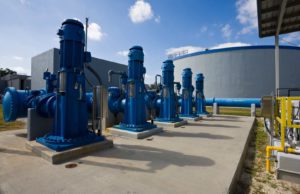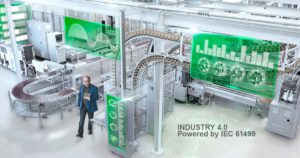With so much of the world’s attention focused on maintaining public health and lowering the overall risk of infection in the face of the ongoing pandemic, one of the more unexpected consequences has been the adverse effect our increased use of non-flushable items is having on wastewater systems.

Our relentless quest for increased convenience, combined with recent efforts to encourage healthy personal habits means more “non-flushable” sanitary wipes, paper towels, masks and swabs, just to name a few, are entering municipal wastewater system. Despite the marketing, these products are not truly flushable. They do not properly break down and often back up in pipes, growing into sinewy masses that quickly block sewage infrastructure, clog screens or filters and damages treatment plant equipment and pumps.
Consequences of wastewater pump challenges
Downtime, maintenance outlays and capital expenses are rising due to increased treatment plant labor costs and equipment repair or replacement requirements. Though cost statistics for the entire U.S. are not readily available, the National Association of Clean Water Agencies estimates utilities nationwide spend up to $1 billion each year solving these issues in the USA.
Worse still, wastewater can overflow, or back up into local residences due to pump jams, posing an otherwise preventable public health risk. There are however, a variety of actions available to help mitigate the toll that the mounting disposal of non-flushable items is wreaking on wastewater infrastructure worldwide.
Public involvement and anti-jam technology offer a long-term solution
Perhaps the most obvious measure is educating the public to observe appropriate disposal practices. For example, an outreach program in Portland, Maine indicates that with sustained effort, people can change their habits. Advocacy groups, trade associations, manufactures and the wastewater sector are still searching for consensus around effective measures (e.g. product standards, labeling, etc.) to address the problem, leaving mutually agreed change a long-term goal.
On a mechanical side, variable speed drives (VSD), especially those with anti-jam technology are quite effective in limiting clogs and pump damage. The anti-jam function found in high-performance VSDs helps prevent clogging and fouling of pump impellers by manually or automatically initiating a back and forth action in the water flow to clear them. or remove obstructions from pipes and valves. Further, VSDs offer benefits including lower energy consumption, precise control and reduced maintenance, plus connectivity and intelligence options that enable them to identify potential problems in real-time, so operators can prevent damage to equipment before it happens.
Three anti-clogging solutions for new or existing installed bases
To help clear obstructions caused by the increase in non-flushable items entering the waste stream, industry professionals have three major solutions available to them, starting with the most sophisticated and progressing to the simplest and most economical:
To help clear obstructions caused by the increase in non-flushable items entering the waste stream, industry professionals have three major solutions available to them, starting with the most sophisticated and progressing to the simplest and most economical:
-
- A VSD equipped with integrated anti-jam function – Schneider Electric is a leading provider of this cutting-edge motor control technology that can significantly reduce the need for manual clog removal, with its resulting expense and downtime.

- A VSD or softstarter, plus a PLC – Using a motor’s absorbed current feedback, this scalable, full-featured solution also can also provide motor speed and direction control to help reduce the risk of clogging and impeller damage in wastewater infrastructure.

- Motor protection and current monitoring module – This simplified, hybrid solution for installations with traditional motor startup methods is able to initiate reverse and forward rotation to help keep pipes and motors clog-free:
- A VSD equipped with integrated anti-jam function – Schneider Electric is a leading provider of this cutting-edge motor control technology that can significantly reduce the need for manual clog removal, with its resulting expense and downtime.

Finding a permanent fix for the problems posed by the increasing disposal of non-flushable items in wastewater systems is likely to take more time, plus concerted effort by all stakeholders. However, clever technical solutions are available today to mitigate the issue and lessen the costly impact to crucial sewage infrastructure.
To learn more, visit our website, or contact our HVACR & PUMP Competency Center.



